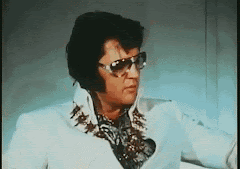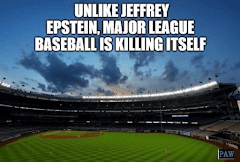Sudden death on a street corner
Milan Loncar, 25, died suddenly Wednesday evening January 13 in Philadelphia’s Brewerytown section. That name will not be familiar to most readers beyond the immediate Philadelphia area. I’m writing to acquaint a wider audience with Mr. Loncar and the circumstances of his tragic death.
Brewerytown is named after the many mostly German-American owned breweries operating in the neighborhood in the 19th and early 20th centuries. The area is “booming,” fueled by an influx of young singles, couples, and first-time home buyers and investors attracted by its affordability, cool vibe, and Philadelphia’s cultural attractions.
The downside is that, because of easy access by the criminally minded from surrounding high crime areas, Brewerytown’s crime rates are markedly higher than the Philadelphia average. Milan Loncar encountered two criminally-minded young men that fateful evening on a desolate Philadelphia street corner.
Surveillance video shows Mr. Loncar walking Roo, his dachshund-Chihuahua mix dog, around seven o’clock that evening when he was approached by two males during a random, crime-of-opportunity robbery attempt. One male pointed a handgun at the slightly built Loncar and then both started reaching toward his pants pockets. Finding nothing (he left his wallet at home) they shot him. He was pronounced dead minutes later at Temple University Hospital.
What makes the murder most terrible is the Milan Loncar his friends and family knew. Loncar, an engineering major, graduated from Temple in 2019. He was employed for about a year by a construction management company.
Jelena Loncar, 27, his sister, who lived close by, described him as “selfless, constantly smiling.”
“I don’t know if he was targeted. I don’t know if they were going to rob anyone,” she said. “If he’s walking his dog, why would he have a ton of cash on him. I don’t get it.”
I don’t get it either. I doubt anyone does, except perhaps his killers.
Their mother, Amy Lounsberry, described him as a “beloved sweet boy just starting his life.” His girlfriend was planning to move in with him soon, and “everything was coming together for him.”
I did not know Milan, but his uncle, Nikola Loncar, 66, is a Facebook friend and Malvern resident. In a Facebook post, “Nick” wrote, “He (Milan) was an extremely good and responsible child…any conflict is unthinkable in his life.”
Nick once told Milan and Jelena that if they ever had a problem, they should contact him immediately. Milan replied, “Uncle, we don’t cause problems. Don’t worry.”
His post continues, “All five of our children grew up outside of Philadelphia on the Main Line, a place with ‘excellent’ schools and ‘extremely low’ crime rates. That is why…those who grew up in safe environments cannot even imagine the dangers of big cities.”
Jelena now plans to move out of the city.
At the time of this writing, police have the alleged shooter, 20, in custody. Infuriatingly, the suspect, with two previous robbery convictions, was released December 29 on dramatically lowered bail in an armed kidnapping and an assault case.
As of midnight January 18, Philadelphia Police reported 27 homicides in 2021.
Each of those lives mattered to someone. With one exception.
Milan Loncar’s life meant nothing to his cold-blooded killers.
*****************
AMERICA’S BLM-INDUCED HOMICIDE SPIKE
During the second half of 2020, we noted from time to time that homicides were increasing dramatically in American cities — a trend that coincided with BLM protests against the police. Now, the nationwide numbers are in.
Homicide rates were 30 percent higher in 2020 than in in 2019, according to a new report by Professor Richard Rosenfeld and two others. This represents more than 1,268 additional murders (in a sample of 34 cities).
According to Professor Paul Cassell, this is the largest single-year increase in recorded American history. The previous largest was 12.7 percent in 1968, another horrible year.
What explains the shocking increase in homicides? Rosenfeld offers two explanations: the COVID-19 pandemic and the anti-police protests following the death of George Floyd that caused “de-policing.”
Cassell demolishes the first explanation. It’s true that homicides increased somewhat during the Spring, before Floyd’s death. However, that’s normal because better weather typically coincides with more homicides.
The significant spike began in the last week of May. Floyd died on May 25.
Indeed, Rosenfeld’s report acknowledges that homicide rates increased “significantly” in June, “well after the pandemic began, coinciding with the death of George Floyd and the mass protests that followed.” Another study has shown that as of the end of May, “some types of serious violent crime seemed unaffected by the pandemic onset, notably homicide and shootings.”
In Chicago, for example between January 1 and May 28, 2020 there were 191 homicides. During the same time frame in 2019, the number of homicides was 192. But on May 31, as we touched on here, eighteen people were murdered and dozens more were shot in Chicago, making it the single most violent day in six decades.
We’re left, then, with one explanation for the spike in homicides — “de-policing” triggered by the anti-police protests and rioting. This de-policing is evident from decreases in arrests and in stops. And it’s related not only to a pulling back by the police in response to protests and riots, but also to increases in police officer retirements (due to demoralizaton) and decreases in funding.
The decline in stops is noteworthy because, while homicides and shootings rose dramatically in the last seven months of 2020, other crimes decreased. These included robbery, residential burglary, non-residential burglary, larceny, and drug offenses.
That’s the normal pattern when there’s a decrease in stop-and-frisks because, as Cassell says, “proactive policing (e.g., stop-and-frisks) plays a uniquely important role in deterring the carrying of illegal guns and thus preventing firearm crimes.” Thus, in 2016, when stop-and-frisks fell dramatically in Chicago following an agreement between Chicago Police and the ACLU, homicides and shootings increased sharply, while most other crimes did not.
Cassell concludes:
The best, currently available evidence strongly supports the conclusion that the Great 2020 Homicide Spike resulted from the widespread anti-police protests, which in turn lead to a reduction in policing activity directed at fighting gun crimes. To save lives in 2021, we need urgent action to restore proactive policing to its pre-protest levels.
We would see such action, too, if Black lives really mattered to Black Lives Matter.
***************************************
























No comments:
Post a Comment